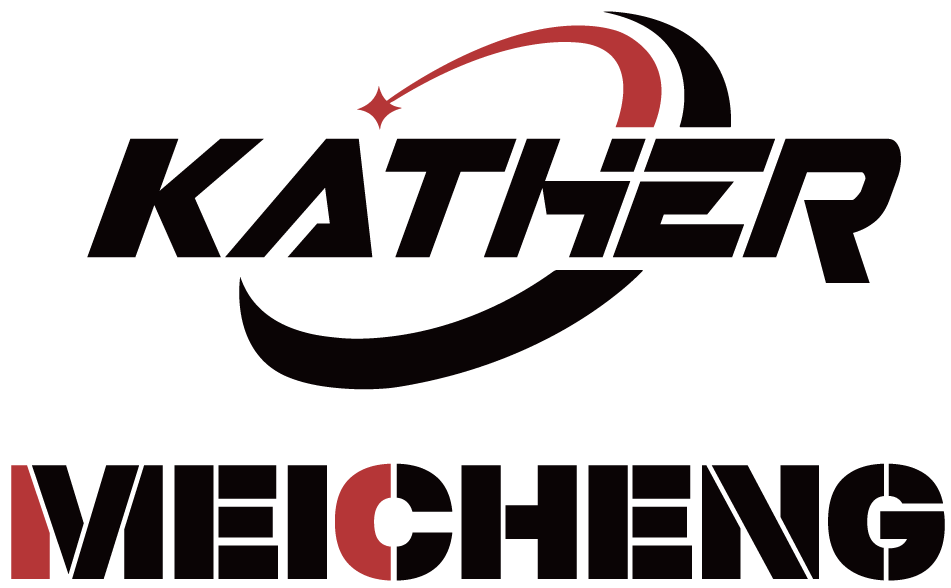Understanding Cultivator Types and Their Agricultural Applications
Knowing about the various kinds of cultivators available today really helps farmers get the most out of their land. Different models work better for certain tasks, so what works on one farm might not be right for another. Take a look at rotary cultivators versus disc types, or maybe tine vs gang models. Farmers who understand these differences can boost soil quality while getting more done with less effort. Some folks swear by particular brands based on their experience, which makes sense when considering how much time and money goes into maintaining equipment.
Rotary Cultivators: Ideal for Weed Control and Seedbed Prep
What sets rotary cultivators apart is their spinning blades that slice through dirt really well, which makes them great at knocking down weeds before they get out of hand. Farmers love these machines because they speed up getting the ground ready for planting, and this tends to boost how many seeds actually sprout since the soil ends up nice and loose. Some field tests have shown that when using rotary tillers, water soaks into the ground faster, something that keeps crops hydrated during dry spells. Most farms can work with different kinds of soil, from sandy patches to clay-heavy areas, so these tools fit pretty much any cropping situation. That flexibility means farmers don't need separate equipment for each type of land they manage.
Disc Cultivators: Soil Mixing and Residue Management
Disc cultivators work with those curved metal discs cutting through the earth, breaking up different soil layers while helping keep moisture where it's needed and spreading out nutrients better. These machines are really good at handling leftover plant material from previous crops too. The residue gets broken down much quicker when using disc cultivators, which means healthier soil over time. Farmers who have switched from old fashioned plows notice less compacted ground after disc cultivation. This makes a big difference especially on heavier clay soils where proper mixing is absolutely necessary for getting consistent results across the field.
Tine Cultivators: Shallow Tillage and Aeration
Tine cultivators have several tines that dig into the soil just below the surface, which helps aerate the ground and breaks apart compacted areas. The way these work actually promotes better root growth since they let air and nutrients get down where roots need them most. Studies show that this kind of light tilling keeps soil moisture levels stable and also cuts down on weed problems. Organic farmers find these machines especially useful because they disturb the soil less compared to deeper plowing methods. This makes sense for anyone trying to farm sustainably without messing up the natural structure of their fields too much.

Gang Cultivators: Heavy-Duty Operations for Large Farms
Gang cultivators are built for big farm operations where farmers need to work multiple rows simultaneously. These machines have several tines or blades that move together across the field, covering lots of ground while cutting down on the time needed for cultivation tasks. According to industry numbers, farms using gang cultivators often see their productivity jump around 25% compared to traditional methods. They handle rough soils pretty well too, which makes sense why so many large scale growers rely on them when dealing with tough terrain and tight deadlines during planting seasons.
Key Features for Optimal Performance
Adjustable Tine Spacing for Crop Versatility
The ability to adjust tine spacing makes all the difference when it comes to working with different crops and getting the most out of cultivation efforts. Most farmers know they need to tweak those tines depending on what's growing in the field, whether it's corn, soybeans, or something else entirely. This flexibility helps tackle weeds better while keeping the soil healthy too, since farmers can set just the right depth for each situation without going too deep and damaging roots. When equipment allows this kind of fine tuning, it really pays off across varied farm conditions, which is why adjustable tine spacing has become standard on pretty much every serious piece of modern farming gear these days.
Depth-Control Wheels for Consistent Tillage
Depth control wheels play a key role in keeping tillage at the same level throughout the field, something farmers know is really important for getting good soil ready for planting. When these wheels do their job right, they help mix the soil evenly and get proper air into it, which makes all the difference for roots growing strong in crops. Farmers who maintain consistent depth see healthier plants overall, and most report better harvests at the end of the season. What's interesting is how precise these wheels make things. With accurate depth control, growers can actually implement those fancy fertility boosting techniques without worrying about uneven results. That's why many modern farms consider depth control wheels almost indispensable if they want to maximize what comes out of their fields while still being efficient with resources.
Quick-Hitch Compatibility for Efficient Operations
Quick hitch compatibility makes a real difference in how efficiently farms operate day to day. When equipment allows fast swapping of attachments without all the hassle, it saves precious minutes during busy seasons. Farmers spend less time fiddling with connections and more time actually working the fields. The whole operation runs much smoother because there's no waiting around between tasks. Most growers will tell anyone who asks that these systems pay for themselves many times over through reduced downtime alone. Time saved means more acres covered, better crop management, and ultimately higher harvests at the end of the season.
Evaluating Soil Conditions and Farm-Specific Needs
Analyzing Soil Texture and Moisture Levels
Getting to know what kind of soil we're dealing with and how much moisture it holds makes all the difference when picking out the right cultivator for farm work. Different soils just don't play nice with the same tools. Take sandy soils for example they really respond well to cultivators that do light surface work, while heavy clay soils need something tougher that can dig deeper into the ground. Moisture content matters too because trying to cultivate when the soil is too wet will just compact it instead of loosening it up, which nobody wants to see happen. Farmers who take time to check these details before starting tend to get better results in their fields. When everything matches up properly, crops grow better and the land stays healthier over time, making the whole operation worth the extra effort in planning ahead.
Matching Implement to Crop Rotation Patterns
Getting the right equipment matched up with crop rotation plans really helps boost soil fertility and keep farms healthy over time. Different crops grown in certain sequences need specific tools that work well with how they grow and what they look like physically. Take it from experience, rotary cultivators tend to do better when dealing with crops that need thorough soil mixing, while tine cultivators often work great for plants that respond well to lighter aeration. When farmers pair their machinery properly with these crop rotation strategies, they get better use out of resources, the soil gets healthier, and harvests generally improve. This approach gives them a solid edge in running sustainable operations without sacrificing productivity.
Calculating Field Size and Work Rate Requirements
Figuring out how big a field is and what kind of work rate it needs are really important when picking the right cultivator and setting up farming operations properly. Bigger fields generally require heavier duty machines just to keep things running smoothly without wasting time or fuel. Farmers who take the time to understand these requirements can plan their schedules better and make sure all their equipment actually works as intended during planting season. Getting this right means matching the machinery to both the crops being grown and the specific conditions of each field. When done correctly, this approach makes farm work run much smoother overall, leading to better yields at harvest time and saving money in the long run too.
Tractor Compatibility: Power and Attachment Considerations
Horsepower Requirements for Optimal Traction
Getting the right amount of horsepower in tractors matters a lot for good traction and effective tilling work across fields. Farmers need to pair their tractor's power output with what kind of cultivator they're actually using out there. If a tractor doesn't have enough power for the job at hand, the machinery gets worn down faster and the soil just won't get worked properly. Most agricultural specialists will tell anyone who asks that matching up those specs makes all the difference in how well things run day to day. When everything works together as intended, farms tend to see better yields and fewer breakdowns during planting season.
Three-Point Hitch Compatibility Factors
Getting the right three-point hitch compatibility matters a lot when it comes to stable lifting and accurate handling during tilling work. There are several things that determine whether an implement will work properly with a particular setup. Size and weight of the attachment play a big role here since they impact how well everything functions together. Farmers need to check these details carefully if they want their operations to run smoothly without safety issues. Mismatched components can lead to poor tillage results and ultimately hurt overall productivity on the farm. Before buying any new gear or putting existing equipment into action, make sure the implement actually fits with what's already on the tractor. This simple step prevents headaches down the road from incompatible parts causing all sorts of problems in the field.
Weight Distribution and Transport Considerations
Getting the weight right matters a lot when moving farm gear like cultivators around. When weights aren't balanced properly, tractors become unstable and farmers run real risks of tipping over both in fields and on roadways. Transport isn't just about physics either. Farmers need to know what their area's rules say about taking equipment onto public roads, otherwise they might get stuck with fines or worse. Balancing loads correctly plus knowing the regulations makes all the difference when shifting machinery from one job site to another. This stuff keeps farms running smoothly without unnecessary delays or dangers. For most operators out there, these basic precautions mean the difference between getting work done safely and facing costly downtime later on.
Maintenance Best Practices for Longevity
Daily Cleaning and Lubrication Protocols
Keeping cultivators running smoothly requires some basic daily maintenance. A good cleaning habit goes a long way toward getting rid of dirt and grime that can cause rust over time, which keeps the machine working properly for years instead of months. Don't forget about those moving parts either. Putting some quality oil on them cuts down on friction so everything moves without sticking, making the whole operation much smoother and saving money on repairs later. Most farmers find it helpful to write down when they last cleaned and oiled their equipment. Some even stick notes on the tractor dashboard as reminders. This simple habit makes all the difference between having reliable tools and constantly dealing with breakdowns during busy seasons.
Blade/Tine Replacement Guidelines
Keeping an eye on those blades and tines and swapping them out when needed makes all the difference in how well a cultivator works. Let's face it, after months of pounding through dirt, those cutting edges get dull or bent out of shape. When that happens, the whole machine just isn't doing its job right anymore. The soil gets worked unevenly, which means extra passes and wasted fuel. Smart farmers develop their own maintenance schedule depending on how much they're using the equipment and what kind of ground they're working. Sandy soils wear things down differently than clay, so adjustments matter. A little proactive care goes a long way toward keeping those cultivators running smoothly season after season.
End-of-Season Storage Preparations
Getting things ready for proper storage at season's end really matters if we want to avoid damage and cut down on those annoying repair bills later on. What needs doing? First off, give everything a good clean and make sure all gear is properly covered so rain, snow or dust doesn't get to it. Before putting anything away, go through each piece and check that everything still works as it should be. Some folks skip this step and regret it come springtime when something breaks down unexpectedly. Creating a solid storage plan makes life easier down the road. Know where each item goes, how it should be positioned, what kind of cover works best for different tools. A little extra time now saves headaches (and money) later.
Importance of Local Dealer Support and Parts Availability
Whenever we're looking at buying new farm gear, checking out what spare parts are available nearby comes right at the top of my list. The truth is, when something breaks down in the middle of planting season, having those replacement parts on hand makes all the difference between getting back up and running quickly or facing days of lost productivity. Farmers need to take some time to look around at what local dealers actually stock. Sometimes they claim to carry everything but really don't have the key pieces when we need them most. Parts availability varies quite a bit from place to place, so this becomes one of those things we just have to think about seriously before making any big purchase decisions. After all, nobody wants their tractor sitting idle while waiting for a part to come from who knows where.
Looking at warranty coverage should be part of any equipment purchase decision. Knowing exactly which repairs or parts get replaced while owning the machine brings some comfort and helps avoid surprises down the road. Getting things fixed fast matters a lot for business continuity, especially around busy periods when downtime costs money. Most buyers check how reliable nearby dealers are with their service response times before making a final choice on equipment purchases.
The location of nearby service centers for emergency fixes matters a lot too. When something breaks down unexpectedly, having quick access to help means less time sitting idle waiting for parts or technicians. Farmers need to think about where their nearest dealer or repair shop actually is, particularly if they work on remote properties away from town. Sometimes distance makes all the difference when choosing farming equipment. We want machines that won't leave us stranded hours away from assistance during critical growing seasons or harvest periods.
FAQ
What is a cultivator used for in agriculture?
A cultivator is an agricultural implement used for soil preparation and weed control. It is essential for mixing and aerating soil, enhancing fertility, and preparing seedbeds, thus contributing to improved crop production.
How do you choose the right cultivator for a farm?
Selecting the right cultivator depends on factors such as soil type, field size, crop rotation patterns, and specific farming needs. It's crucial to evaluate these factors, ensure compatibility with existing equipment, and prioritize adaptability and efficiency.
What are the key maintenance practices for cultivators?
Regular cleaning and lubrication, timely blade or tine replacements, and end-of-season storage are essential maintenance practices. These practices help maintain cultivator functionality and longevity, ensuring optimal farm operations.
Why is local dealer support important when purchasing agricultural equipment?
Local dealer support ensures quick access to spare parts, emergency repairs, and reliable warranty service, minimizing downtime during critical farming periods. Assessing this support enhances equipment selection and operational efficiency.
Table of Contents
- Understanding Cultivator Types and Their Agricultural Applications
- Key Features for Optimal Performance
- Evaluating Soil Conditions and Farm-Specific Needs
- Tractor Compatibility: Power and Attachment Considerations
- Maintenance Best Practices for Longevity
- Importance of Local Dealer Support and Parts Availability
- FAQ







